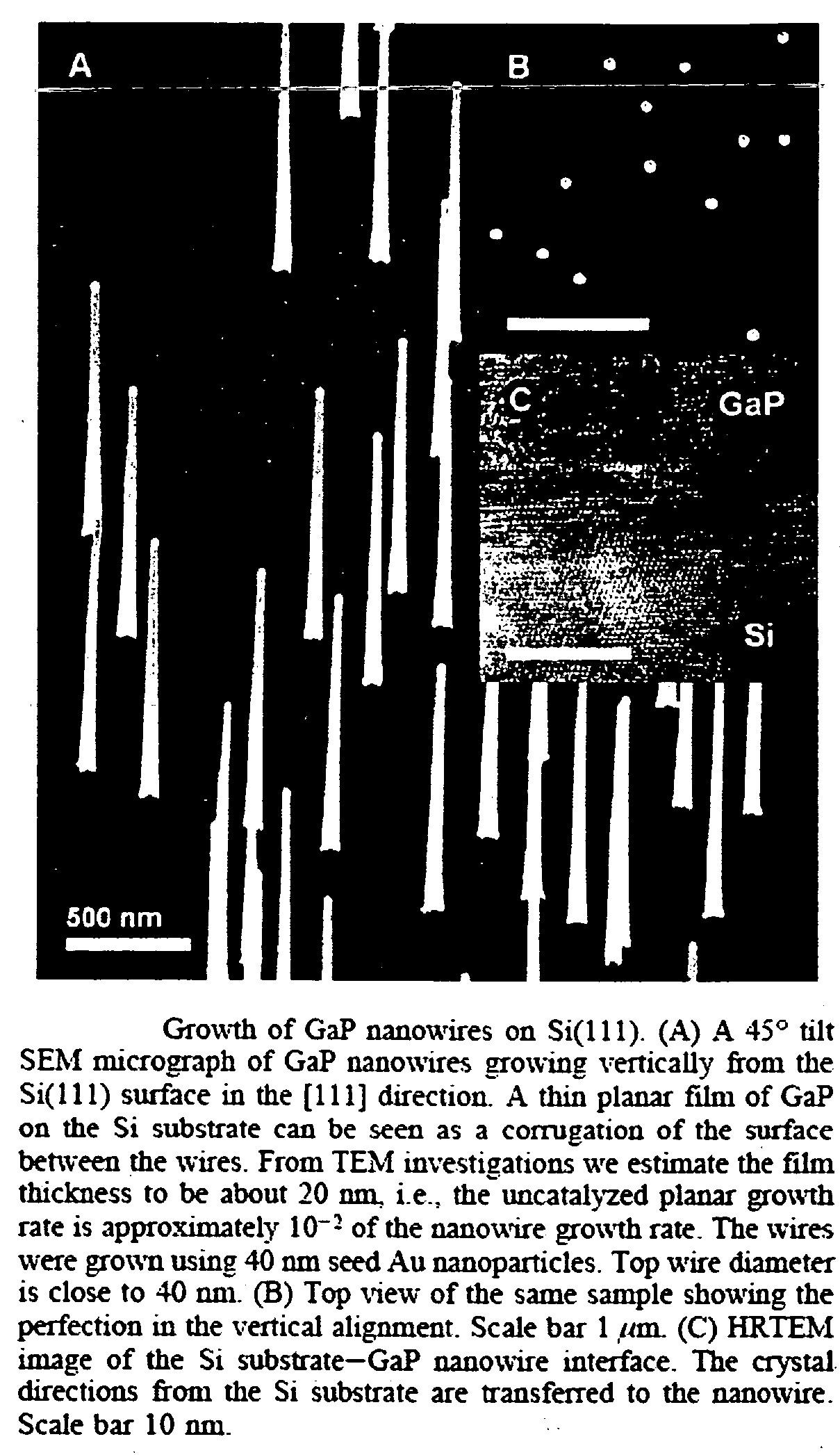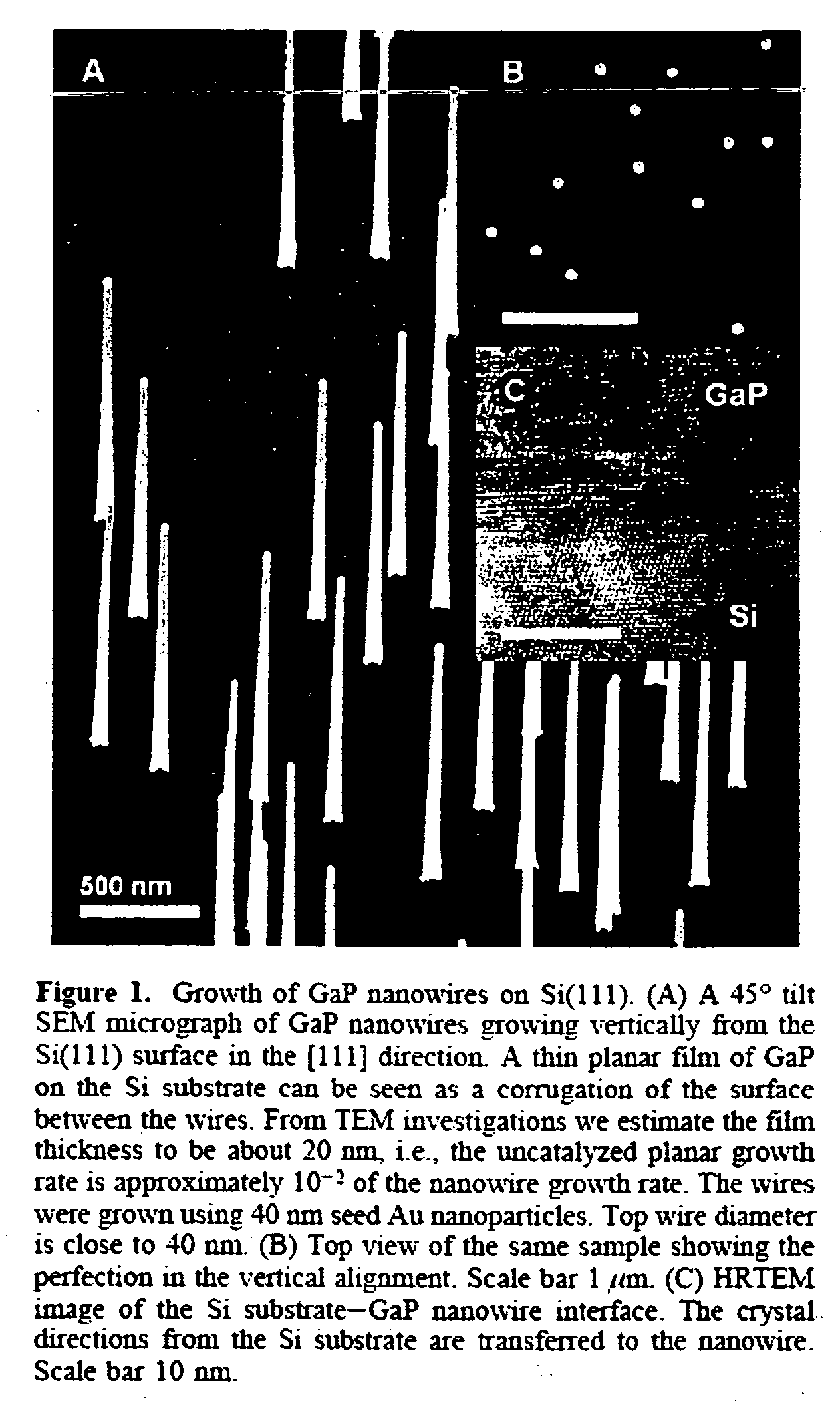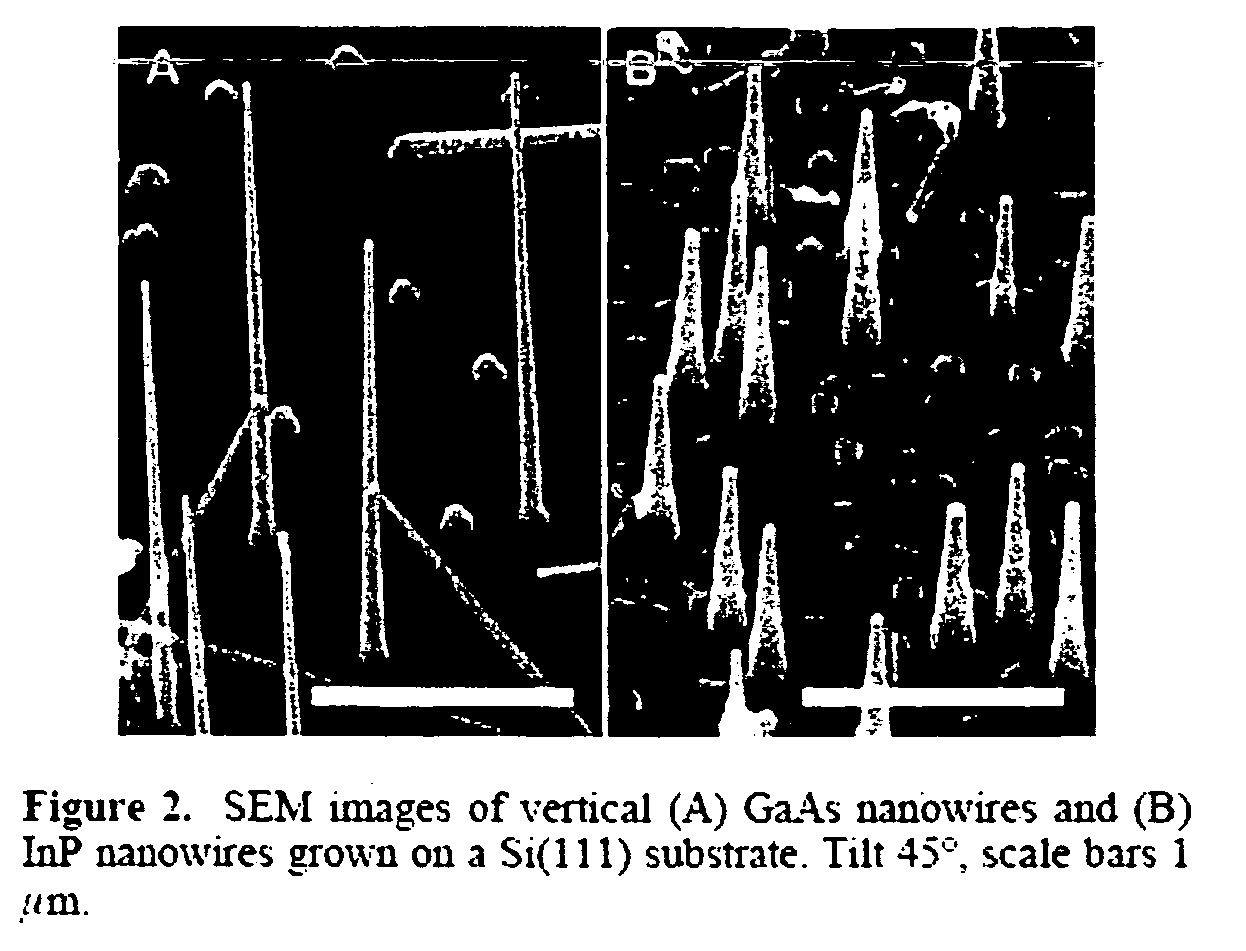Formation of nanowhiskers on a substrate of dissimilar material
a technology of dissimilar materials and nanowhiskers, applied in the direction of polycrystalline material growth, crystal growth process, chemically reactive gas, etc., can solve the problems of large thermal expansion coefficient difference, defective material, and formation of anti-phase domain walls, so as to achieve high-reliability photonics devices, effective implementation of optical interconnections, and the effect of essentially constant luminescence properties of segments
- Summary
- Abstract
- Description
- Claims
- Application Information
AI Technical Summary
Benefits of technology
Problems solved by technology
Method used
Image
Examples
examples
[0076] Starting material was “Toyo” Epitaxial Silicon Wafers, P type substrate with a P type epilayer orientation (111).
DopantResistivityThicknessSubstrateBoronΩ cm245 μmLayerBoron12Ω cm 27 μm
[0077] Preparation Prior to Growth
[0078] 1) Clean with ultrasonic Tri-clean to remove organic residues and particles.
[0079] The wafer was placed in a test tube and solution a) below was added. The test tube was put in ultrasonic bath at 35 KHz for 2-3 minutes. After, the bath the solution was decanted and the next solution was added. The process repeated for solutions b)-d) in that order.
[0080] a) Trichloroethylene (proanalysi)
[0081] b) Acetone (proanalysi)
[0082] c) Ethanol (95%)
[0083] d) Milli-Q-H2O
[0084] The water was decanted and refilled 2-3 times in Milli-Q-H2O (18.2 W cm 25° C.). Rinse the wafer.)
[0085] 2) The wafer was removed from the rinse water and immediately cleaned with Piranha Etch to remove any remaining organic residues.
[0086] The following were measured and mixed in ...
PUM
 Login to View More
Login to View More Abstract
Description
Claims
Application Information
 Login to View More
Login to View More - R&D
- Intellectual Property
- Life Sciences
- Materials
- Tech Scout
- Unparalleled Data Quality
- Higher Quality Content
- 60% Fewer Hallucinations
Browse by: Latest US Patents, China's latest patents, Technical Efficacy Thesaurus, Application Domain, Technology Topic, Popular Technical Reports.
© 2025 PatSnap. All rights reserved.Legal|Privacy policy|Modern Slavery Act Transparency Statement|Sitemap|About US| Contact US: help@patsnap.com



